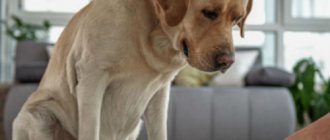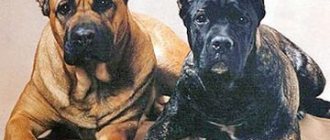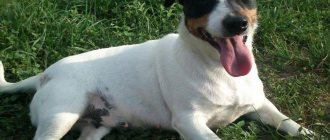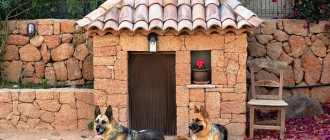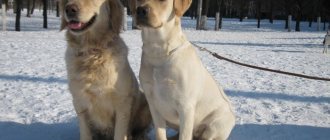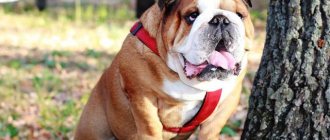Buying a four-legged pet is a very exciting and joyful event. The variety of breeds available is amazing, but sometimes leads to a dead end. Understanding which dog to choose, especially if you've never had one before, is not at all easy.
Each animal has its own advantages and disadvantages, so too impulsive decisions often end in separation. To avoid bad experiences, it is recommended to fix the minimum requirements for a future family member and evaluate your capabilities.
Why is it so important to choose the right dog breed?
First of all, it is important to understand that the presence of ANY animal limits the usual freedom. Before you decide to purchase, be sure to make sure that you are prepared for the following hardships:
- Time. Caring for a pet takes a lot of time and effort. In addition to combing wool and other important procedures, we must not forget about banal communication.
- Daily regime. You will have to walk your four-legged dog at least 2 times a day. If you are afraid of getting up early and walking in the rain, it is better to take a cat or ferret.
- Additional expenses. Soberly assess your capabilities. Some large dogs eat more than a person, while small ones often suffer from sensitive digestion and need special ready-made diets.
- Damage to property. Even the most intelligent and obedient representatives can play pranks in childhood. Chewed shoes, torn wallpaper and puddles on the floor are what you will have to put up with in the first months of adaptation.
- Frequent departures. Most four-legged animals have a very hard time with loneliness. It is recommended to take these pets with you on any trips out of town and to meetings with friends.
After acquiring a four-legged family member, you will have to take on certain obligations to raise it, so you should not give an animal as a gift without the knowledge of the recipient. If the above difficulties do not scare you, feel free to move on to the next stage.
Test: how to find one for yourself?
In order not to make a mistake when choosing a tailed partner, you can fill out a kind of test. Fill out all the columns and select the breed that meets all the criteria.
| Appearance | Character | Special requirements | What is it for? |
| Big or small? Fluffy or short-haired? | Obedient, active, calm, smart... | Think about what you will not tolerate under any circumstances: daily brushing, eye care, walks. Write what exactly you want and what you agree to | What kind of dog do you need: companion, friend, guard, jogging buddy? |
Using these criteria, it is easy to select the right breed.
Floor
One of the important selection criteria, in addition to the breed of the dog, is its gender. Despite their similar appearance, girls and boys have different characters and behavioral characteristics.
Males are good for participating in canine sports. They are stronger, larger and more active, but are less trainable. Learning difficulties arise from an innate desire to dominate.
Also, the disadvantages include a strong sex drive. Males often run after females in heat, breaking off the leash or getting into fights with potential rivals.
Females are suitable for breeding puppies. They are graceful, affectionate and strongly attached to their owner. Thanks to their calm disposition and lack of leadership habits, it is easier to teach them commands and rules of behavior.
The only serious drawback of bitches is estrus. Periodic hormonal surges negatively affect obedience and increase the risk of infection.
If you do not plan to become a professional breeder, then be sure to sterilize your pet immediately after puberty. A timely operation will help get rid of mood swings and reduce the likelihood of cancer in the future.
Age
The age of the animal is also very important. The most optimal is 2-3 months. At this point, the puppies begin to feed themselves and receive all the necessary vaccinations. Thanks to this, they can more easily tolerate separation from their mother and become less vulnerable to infections.
A later age is recommended for large dogs, as they take longer to develop and often remain puppies for up to 2 or even 3 years. There is no need to rush if you plan to take your pet to dog shows or introduce him to breeding. Compliance with the standard and championship makings are difficult to track until 6-9 months, so a puppy adopted too early may not meet your expectations in the future.
First dog in life
If you have never had a dog, take the selection of the breed with the utmost seriousness. If you have no experience, you should avoid adult animals and pets with pronounced dominant behavior. Due to their established habits and constant attempts to challenge human authority, they are very difficult to train without the help of a dog handler.
The best option is puppies that are already toilet trained and unquestioningly obey their owners. These animals include poodles, golden retrievers and Labradors.
Character, temperament and activity
Don’t forget about your own character, as well as your usual way of life. The moment of changing your daily routine can be mitigated if you choose a pet with a similar temperament and activity level.
Lovers of peace and tranquility are advised to pay attention to the phlegmatic English bulldog or chow-chow, and those who love sports and frequent walks are advised to pay attention to energetic terriers or huskies.
For workaholics, basset hounds or sharpeis are more suitable, as they can easily tolerate loneliness, but it is better to immediately refuse to buy a lapdog, since a small amount of attention has an extremely negative impact on its health.
Centenarians
Dogs live five to seven times less than us. But among them there are relative long-livers. Tibetan mastiffs , having excellent health, sometimes live up to almost 20 years. In this sense, they are record holders among their brothers. True, in order for the Tibetan mastiff to live so long, it is better for him not to leave his native place.
The Tibetan mastiff is a giant: he is the only one among such centenarians.
In general, small dogs live long : pugs, chihuahuas, Pomeranians, Shih Tzus, dachshunds, Yorkshire terriers, Pekingese. Of the medium-sized dogs, the collie and the Australian shepherd have a fairly respectable life expectancy.
But, unfortunately, there are many more short-lived dogs among dogs . These are almost all large and medium-sized breeds. Sennenhunds or American bulldogs, greyhounds or Karelian huskies live no more than 10 years, more often - 8-9 years.
By living space
If the previous criteria have not sufficiently narrowed the possible sample and you still do not understand how to choose a puppy breed, then it’s time to take into account the size of your living space. They will help eliminate some options based on the size of the future pet.
For a small apartment
Small studio apartments are suitable for miniature dogs. Yorkshire Terriers, Japanese Chins and Pekingese take up little space and easily fit into even the most modest conditions.
For a large apartment
A large apartment consisting of three or more rooms is suitable not only for miniature dogs, but also for medium-sized and large dogs with a calm temperament. The latter include Great Danes, Newfoundlands and St. Bernards.
For a private home
If you have a private house with a separate territory, the choice is unlimited. Such conditions are recommended for the largest representatives (mastiffs, wolfhounds, Leonbergers) and energizer dogs (terriers, huskies, aussies).
Please note that the pet must live either with its owners or in an insulated enclosure. Keeping in the open air or on a chain is unacceptable.
For hunting
There are a great variety of hunting breeds: hundreds of them. But there are universal ones: with them you can hunt anyone, from a bear to a squirrel. These are huskies and all hounds . They are ready to pick up and chase any game.
If you have to catch up with the beast, then greyhounds : Russian greyhounds are the fastest.
If you need to fetch a dead bird from the water, you need a spaniel or a retriever .
a pointer or setter is needed .
If you are looking for a wolf, then get an Irish Wolfhound .
For families
Do not forget that the animal must meet the expectations of all family members. If the main owner of a four-legged animal is a child or an elderly person, then much more requirements should be placed on him.
With kids
Children love to play pranks and do not always restrain their emotions, so build on your child’s activity and manners. The most patient pets are nanny dogs. These include Scottish Sheepdogs (Collies), Golden Retrievers and Labradors. It is almost impossible to unbalance such a dog, since he is wholeheartedly devoted to his owners and is devoid of aggression towards humans.
Representatives of miniature breeds are best taken for conscientious preschoolers and teenagers. Children under 3 years old can accidentally harm a pet by not calculating the strength of their hugs. Possible trauma also works in the opposite direction. A good-natured, but too large dog can easily crush a child during joint games.
For pensioners
Some retirees lead more active lifestyles than younger people. In their case, the choice of pet is practically unlimited, but most older people are still less mobile.
For this reason, they should not have animals that are too large, difficult to keep on a leash, or dogs that require frequent and long walks. The best option is a small decorative dog that is easily litter trained and can easily survive several weekends at home.
Another important point is the complexity of care. A pet for a pensioner should be as unpretentious and not picky as possible, so you should not spend money on elite show-class puppies. The easiest way is to stick to the pet class or take a mongrel.
What can happen?
A high school student got a boxer, a cheerful, healthy dog. For two years they were quite happy together. Then the young man left to go to college in the capital, and gave the dog to his grandmother. After a short time, the dog died of melancholy.
A Muscovite built a dacha and got an Alabai puppy to guard it. While it was summer, the puppy was running around the yard, and everything was going great. But what to do in winter? The dog was taken to the city, but it turned out to be impossible to keep the grown giant in the apartment.
In the yard where the garages are, they put a shed with a lattice and put the dog there. He spent several months in this prison until animal rights activists rescued him, forcing the owner to sell the dog.
How many similar situations are there that no one knows about? Only those who choose the right breed of pet are guaranteed to avoid such a scenario. In order not to make a mistake, you need to take into account a lot: both in your ward and in yourself .
Short-haired or long-haired
The difficulty of grooming depends greatly on the type of coat. Long-haired and fluffy four-legged animals look very elegant, but their hairs constantly get tangled and catch dirt. This problem is less common in short-haired animals.
If you have allergies or a strong love of cleanliness, it is recommended to pay attention to the severity of shedding. The thicker the undercoat, the more fluff there will be. The overall length of the coat does not affect this process, and among long-haired dogs you can often find hypoallergenic ones.
By breed group
The last important point is the purpose of the acquisition. If you still don’t know how to decide on the breed of dog, then just think about what you are getting it for: hunting, guarding, or just for fun.
Hunters
These four-legged animals were bred to hunt together with humans. They are not aggressive, cheerful and very hardy. All hunting dogs are divided into 5 large groups:
- greyhounds (Salukis, greyhounds);
- hounds (beagles, basset hounds);
- burrowers (dachshunds, terriers);
- gundogs (spaniels, retrievers);
- likes.
If you are engaged in professional hunting, start from the type of prey and the desired method of catching it. In other cases, the animal will need to be provided with activity comparable in activity: regular jogging or exercise on apparatus.
Security guards
Guard dogs have a developed guarding instinct and an innate distrust of strangers. They are brought in to protect property and as personal bodyguards.
In addition to large dogs like the Caucasian Shepherd and Moscow Watchdog, this group also includes very small representatives such as Boston Terriers and Schipperkes. Due to their modest size, these four-legged animals are not able to seriously repel intruders, but they can warn you of danger or scare away a thief with their loud barking.
Companions and decorative
The last group includes dogs bred artificially and used exclusively as pets. Due to their small size and good-natured nature, they are not suitable for serious work, but they get along well with people and know how to listen to them. Among the most popular representatives are the following:
- all varieties of lap dogs;
- poodles;
- small molossoids (French bulldogs, pugs, Boston terriers);
- Pekingese and Japanese Chins;
- Papillons, Russian Toys and Prague Raters;
- Cavalier King Charles and King Charles Spaniels;
- chihuahua;
- Shih Tzu;
- Chinese Crested.
The main disadvantage of these four-legged animals is their acute intolerance to loneliness. If you often go on business trips or stay late at work, then it is better to abandon such a gentle pet in favor of a more self-sufficient one.
Size
Of course, size matters.
Dwarf and small
If the dog will live in an apartment, in a small room, it is probably better to choose a dog of a small or medium breed .
All these dogs are not too different in size from a cat, and the Chihuahua and Pomeranian are even smaller.
Average
Medium breeds:
True, Collie, Doberman, Mountain Dog, Diver, Malamute, Samoyed, and Miniature Schnauzer are sometimes classified as large breeds, since they are noticeably larger than the bulk of dogs of medium breeds.
There are about 200 such breeds in total.
Big and large
Such dogs are suitable for those who live in private, country houses . In addition to the need for space to walk, these wet-nosed friends have a serious appearance and are quite hostile to strangers, which makes them excellent guards.
Large dogs are excellent companions for walks, hikes, and jogging together, which means they are quite helpful in your recovery and weight loss.
